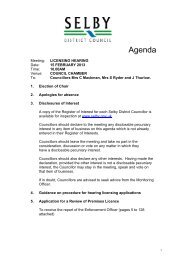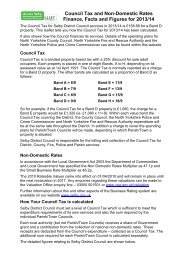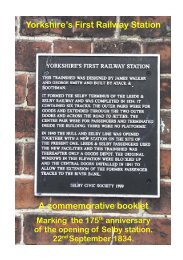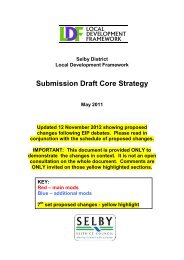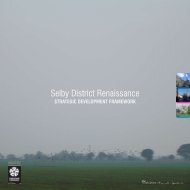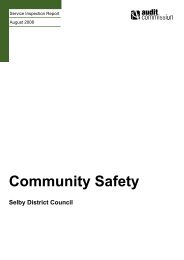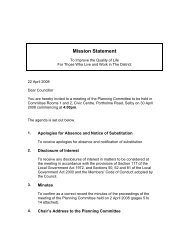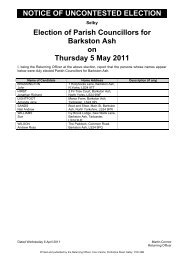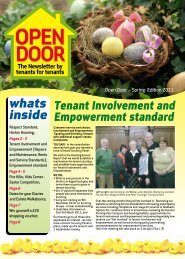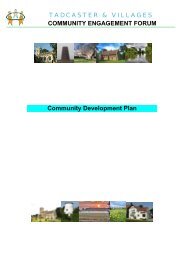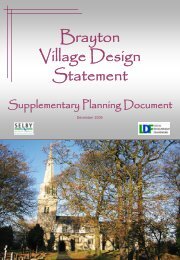Final Economic Viability Report September 2009 - pdf
Final Economic Viability Report September 2009 - pdf
Final Economic Viability Report September 2009 - pdf
You also want an ePaper? Increase the reach of your titles
YUMPU automatically turns print PDFs into web optimized ePapers that Google loves.
- Red, the scheme is clearly not viable – where the IRR is more than 5% below the target rate of<br />
return<br />
5.4 The summary results for this Scenario can be seen below (all the traffic light tables for individual<br />
analysis are contained in appendix 5)<br />
Baseline Position<br />
70% Social Rented 30% Intermediate 50% Social Rented 50% Intermediate 30% Social Rented 70% Intermediate<br />
Affordable<br />
Housing<br />
Percentage<br />
Green Amber Total<br />
Affordable<br />
Housing<br />
Percentage<br />
Green Amber Total<br />
Affordable<br />
Housing<br />
Percentage<br />
0% 30% 25% 55% 0% 30% 25% 55% 0% 30% 25% 55%<br />
10% 22% 24% 46% 10% 24% 24% 48% 10% 26% 24% 50%<br />
20% 7% 19% 26% 20% 16% 13% 29% 20% 13% 27% 40%<br />
30% 8% 16% 24% 30% 8% 18% 26% 30% 9% 18% 27%<br />
40% 5% 14% 19% 40% 4% 16% 20% 40% 6% 18% 24%<br />
50% 3% 3% 6% 50% 3% 3% 6% 50% 3% 4% 7%<br />
Green<br />
Amber<br />
Total<br />
5.5 This shows that in current market conditions, it is extremely difficult to deliver any residential<br />
development before affordable housing contributions occur. Across all the three tenure splits tested,<br />
only 55% of sites tested were viable in current market conditions with 0% affordable housing. This is<br />
an important consideration when looking at likely future housing supply across the District as at<br />
present 45% of schemes are deemed to be unviable and will not come forward for residential<br />
development.<br />
5.6 As the requirement for affordable housing percentages increases, the viability decreases. SDC’s<br />
current affordable housing policy requirement of 40% affordable housing split 50% Social Rented and<br />
50% Intermediate tenure would only be wholly viable on 4% of the sites tested and marginally viable<br />
on 16% giving an overall viability level of 20%.<br />
5.7 If the tenure requirement was altered to 70% Intermediate and 30% Social Rented, viability would<br />
improve to 24%.<br />
5.8 It is difficult for local authorities to assess what percentage of overall viability should be considered<br />
appropriate and acceptable when creating and affordable housing policy. DTZ’s experience shows a<br />
varied approach, with some authorities feeling anything over 50% is a justifiable basis for setting a<br />
target to other authorities views who consider that any possibility of delivering affordable housing<br />
should be taken as viable and only when the percentage drops to 0% across all the schemes should<br />
that requirement for affordable housing be deemed too high.<br />
5.9 Consultation with SDC and its stakeholders suggest that a figure of 50% or above was a fair and<br />
robust approach to take (although this has not been widely tested and confirmed). Based on this<br />
approach, 10% affordable housing with a 70% Intermediate 30% Social Rented split would be the<br />
Page | 31



